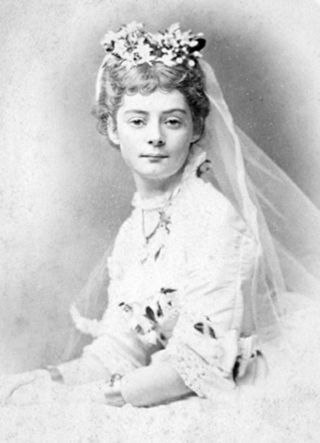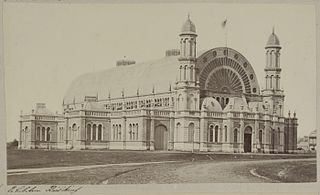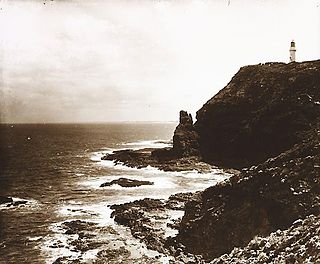
A world's fair, also known as a universal exhibition or an expo, is a large global exhibition designed to showcase the achievements of nations. These exhibitions vary in character and are held in different parts of the world at a specific site for a period of time, typically between three and six months.

The Bureau international des expositions is an intergovernmental organization created to supervise international exhibitions falling under the jurisdiction of the Convention Relating to International Exhibitions.

The Centennial International Exhibition, officially the International Exhibition of Arts, Manufactures, and Products of the Soil and Mine, was held in Philadelphia from May 10 to November 10, 1876. It was the first official world's fair to be held in the United States, and coincided with the centennial anniversary of the Declaration of Independence's adoption in Philadelphia on July 4, 1776.

The Exposition Universelle of 1878, better known in English as the 1878 Paris Exposition, was a world's fair held in Paris, France, from 1 May to 10 November 1878, to celebrate the recovery of France after the 1870–71 Franco-Prussian War. It was the third of ten major expositions held in the city between 1855 and 1937.

The following is a timeline of the history of the city of Melbourne, Victoria, Australia.

The Royal Exhibition Building is a World Heritage-listed building in Melbourne, Victoria, Australia, built in 1879–1880 as part of the international exhibition movement, which presented over 50 exhibitions between 1851 and 1915 around the globe. The building sits on approximately 26 hectares, is 150 metres (490 ft) long and is surrounded by four city streets. It is at 9 Nicholson Street in the Carlton Gardens, flanked by Victoria, Carlton and Rathdowne Streets, at the north-eastern edge of the central business district. It was built to host the Melbourne International Exhibition in 1880–81, and then hosted the even larger Centennial International Exhibition in 1888, and the formal opening of the first Parliament of Australia in 1901. The building is representative of the money and pride Victoria had in the 1870s. Throughout the 20th century smaller sections and wings of the building were subject to demolition and fire; however, the main building, known as the Great Hall, survived.

Expo 58, also known as the 1958 Brussels World's Fair, was a world's fair held on the Heysel/Heizel Plateau in Brussels, Belgium, from 17 April to 19 October 1958. It was the first major world's fair registered under the Bureau International des Expositions (BIE) after World War II.

Joseph Reed, a Cornishman by birth, was a prolific and influential Victorian era architect in Melbourne, Australia. He established his practice in 1853, which through various partnerships and name changes, continues today as Bates Smart, one of the oldest firms continually operating in Australia.

The Carlton Gardens is a World Heritage Site located on the northeastern edge of the Central Business District in the suburb of Carlton, in Melbourne, Australia. A popular picnic and barbecue area, the heritage-listed Carlton Gardens are home to an array of wildlife, including brushtail possums.

Marian Ellis Rowan, known as Ellis Rowan, was a well-known Australian artist and botanical illustrator. She also did a series of illustrations on birds, butterflies and insects.

The first Sydney Intercolonial Exhibition was a series of exhibitions inspired by the historic Great Exhibition held in London in 1851. The Colony of New South Wales mounted its first such exhibition in 1854 in preparation for the Paris Exhibition of 1855, another in 1861 in preparation for the London Exhibition of 1862, and then several more until being held annually throughout the 1870s under the name Metropolitan Intercolonial Exhibition.

Architecture of Australia has generally been consistent with architectural trends in the wider Western world, with some special adaptations to compensate for distinctive Australian climatic and cultural factors. Indigenous Australians produced a wide range of structures and places prior to colonisation. Contemporary Indigenous practitioners are active in a broad range of built environment fields. During Australia's early Western history, it was a collection of British colonies in which architectural styles were strongly influenced by British designs. However, the unique climate of Australia necessitated adaptations, and 20th-century trends reflected the increasing influence of American urban designs and a diversification of the cultural tastes and requirements of an increasingly multicultural Australian society.

Sir William John Clarke, 1st Baronet, was an Australian businessman and philanthropist in the Colony of Victoria. He was raised to the baronetage in 1882, the first Victorian to be granted a hereditary honour.

The Sydney International Exhibition was established headed by Lord Augustus Loftus and took place in Sydney in 1879, after being preceded by a number of Metropolitan Intercolonial Exhibitions through the 1870s in Prince Alfred Park.
For the 1956 Summer Olympics, events were staged in a total of thirteen sports venues in Melbourne, Victoria, one in Ballarat, Victoria, and three sports venues in Stockholm, Sweden. The equestrian events took place in Stockholm in June 1956, due to Australia's strict quarantine laws on equestrianism, and the other Olympic events took place in Melbourne later in the year, between late November and early December.
Originally known as Stephenson and Meldrum (1921–1937), Stephenson and Turner (1938–1995) was a prominent Australian architectural firm, best known for the pioneering modernism of their numerous hospital designs of the 1930s and 1940s.

Nicholas John Caire was an Australian photographer. Caire was born in Guernsey, Channel Islands, to Nicholas Caire and Hannah Margeret. As a boy Caire spoke French found he had a passion for photography that his parents encouraged. Caire moved to Adelaide, Australia, along with both his parents in 1860. Around this time Caire Found a mentor in Townsend Duryea. in 1867 he opened his own studio in Adelaide, Australia. He was married to Louisa Master in 1870 and then shortly after moved to Talbot, Victoria where he continued his photography and started to write for Life and Health Magazine. Caire died in 1918 in Armadale, Victoria.

The Melbourne Centennial Exhibition was organised to celebrate a century of European settlement in Australia. The Exhibition Building, constructed in 1880 for the Melbourne International Exhibition, was extended and reused. The Centennial Exhibition focused on Australia itself, and emphasised music and painting that attracted many visitors. However the Exhibition wasn't recognised by the Bureau of International Expositions as a World's Fair.

The Victorian Intercolonial Exhibition world's fair was held in Melbourne, Colony of Victoria between 2 September and 16 November 1875.




















